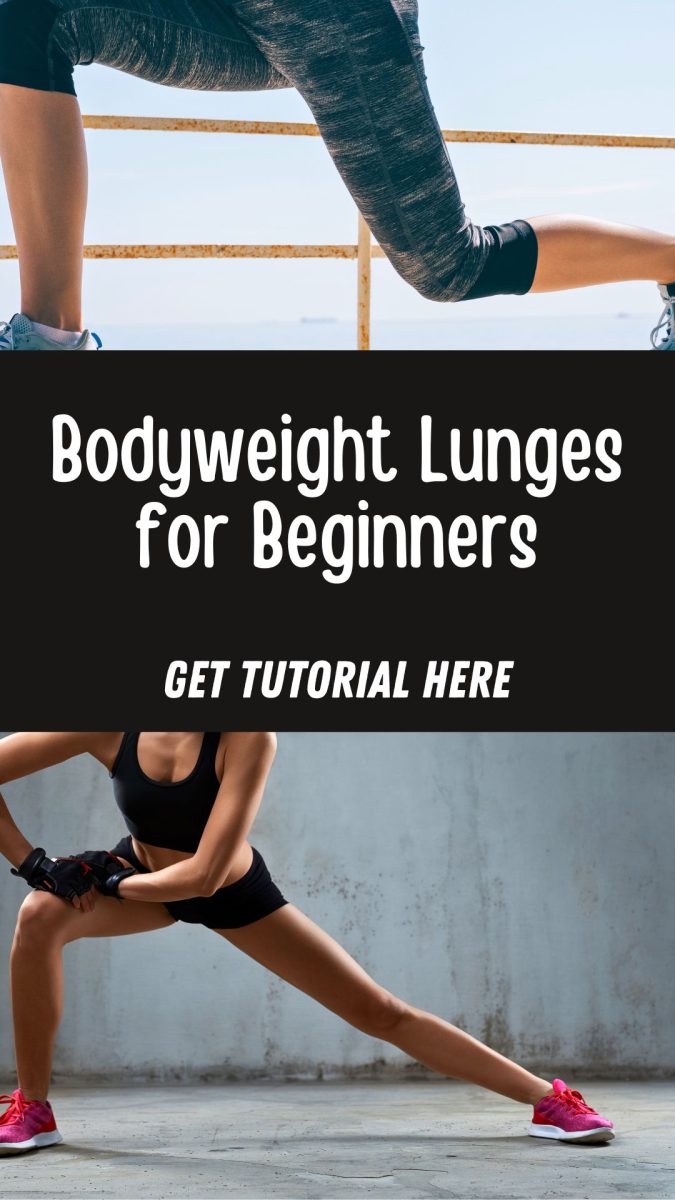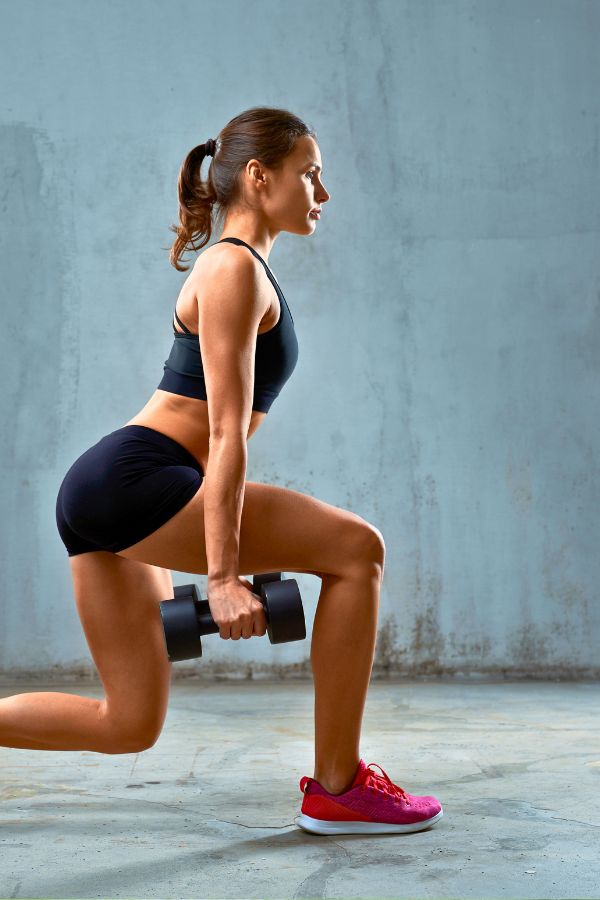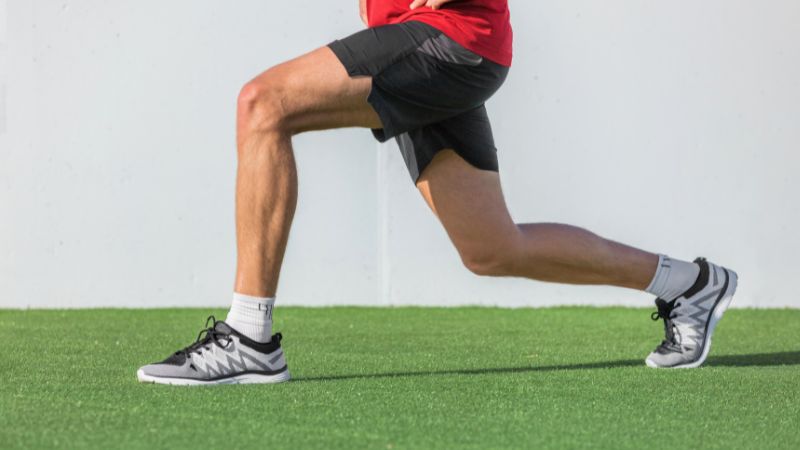When it comes to building lower-body strength, improving balance, and toning your legs, few exercises are as effective as bodyweight lunges for beginners. The best part? You don’t need fancy gym equipment or heavy weights to start. Bodyweight lunges are simple, accessible, and beginner-friendly, making them the perfect move to add to your routine whether you’re working out at home or at the gym. They are a great foundational strength training exercise to base your workouts on to gain the most strength in your body.

Why Lunges Are a Must for Beginners
Lunges are considered a functional movement, which means they mimic real-life actions like walking, climbing stairs, or bending down to pick something up. Training this movement helps you move more efficiently in everyday life.
Some of the biggest benefits of lunges include:
- Strengthening the lower body: Lunges target the quads, hamstrings, glutes, and calves.
- Improving balance and stability: Because lunges are performed one leg at a time, they challenge your balance and coordination.
- Enhancing mobility: The deep step and hip position in a lunge stretches and opens the hips.
- Core activation: Keeping your torso upright requires engagement from your ab muscles.
- No equipment needed: You can do them anywhere, anytime.
For beginners, lunges also help teach body awareness—learning how to move with control and stability before adding weights or more advanced variations.

How to Perform a Basic Bodyweight Lunge
Before you try different lunge variations, it’s important to master the basic forward lunge. Here’s a step-by-step breakdown:
- Stand tall with your feet hip-width apart and hands on your hips or at your sides.
- Step forward with your right foot, landing with your heel first.
- Lower your body by bending both knees until your right thigh is parallel to the ground and your left knee is just above (or lightly touching) the floor.
- Keep your torso upright, shoulders back, and core engaged. Avoid leaning forward.
- Push through your right heel to return to the starting position.
- Repeat with your left leg.
Start with 2–3 sets of 8–10 reps per leg. Move slowly and with control until the form feels natural.
The Importance of Good Form
Form is everything when it comes to lunges. Without it, you risk straining your knees or lower back. Here are some key things to keep in mind:
- Knee alignment: Your front knee should track directly over your ankle, not cave inward or extend past your toes.
- Torso position: Stay upright—don’t hunch forward.
- Step size: Take a step large enough that your front thigh is parallel to the floor but not so long that you overstretch.
- Foot placement: Both feet should point forward, not outward.
- Controlled movement: Lower yourself slowly, avoiding any bouncing.
Filming yourself or practicing in front of a mirror can help you see what your form looks like.
Common Mistakes to Avoid
Beginners often make a few predictable mistakes when learning lunges. Watch out for these:
- Leaning too far forward: This puts extra stress on your knees and lower back.
- Short steps: A tiny step forward limits the range of motion and reduces effectiveness.
- Letting the knee collapse inward: Always keep the knee aligned with the toes.
- Not engaging the core: A loose core can throw off balance.
- Rushing through reps: Quality is more important than quantity.
Remember: perfecting form now sets the stage for safe and effective progress later.
Beginner Variations of Bodyweight Lunges
If the standard forward lunge feels challenging—or if you want to mix things up—there are several beginner-friendly variations.
Reverse Lunges
Instead of stepping forward, step backward. This reduces strain on the knees and makes it easier to stay balanced. Reverse lunges are a great starting point for those new to the move.
Static (Split-Stance) Lunges
Rather than stepping each time, keep one foot forward and one back. Lower and raise your body repeatedly in this stance before switching legs. This removes the stepping motion and simplifies balance.
Assisted Lunges
Hold onto a chair, wall, or railing for extra stability as you practice lowering into the movement.
Walking Lunges
Once you’re comfortable, try taking lunges forward across the room. Walking lunges build endurance and coordination.
Side Lunges
Instead of stepping forward or back, step to the side. This targets inner thighs and hips while improving lateral strength.

Progressing Beyond the Basics
Once you’re comfortable with bodyweight lunges, you can progress by adding:
- Increased reps or sets: Build up gradually to 12–15 reps per leg.
- Plyometric lunges: Add a small jump between lunges for power and cardio.
- Weighted lunges: Hold dumbbells, kettlebells, or even water bottles at your sides.
- Bulgarian split squats: Place your back foot on a chair or bench for an extra challenge.
Always master the basics before moving on—progress should be steady, not rushed.
Building Lunges Into Your Workout
Lunges are versatile and can be used as part of warm-ups, strength training, or full-body routines. Here’s a sample beginner routine:
- Warm-up: March in place, hip circles, bodyweight squats.
- Workout:
- 2 sets of 8 forward lunges per leg
- 2 sets of 10 reverse lunges per leg
- 2 sets of 10 side lunges per leg
- Cool down: Stretch hamstrings, quads, and hip flexors.
This routine builds strength, mobility, and balance while keeping things simple.
What makes lunges so valuable is their carryover into real life. Every time you climb stairs, get up from the floor, or step over something, you’re using the same muscles and movement patterns as lunges. By practicing them regularly, you’re not only building muscle—you’re making daily life easier and safer.
Safety and Recovery
While lunges are safe for most people, they can be tough on the knees if form isn’t correct. To stay safe:
- Warm up before exercising.
- Stretch after workouts to reduce soreness.
- Stop if you feel sharp pain—muscle fatigue is okay, joint pain is not.
- Give your muscles at least 48 hours to recover before repeating the same workout.
If you have knee or hip issues, consult a professional before starting.
Tracking Progress
Keeping a workout journal can help you see improvement over time. Note:
- How many reps and sets you completed.
- Which variations you tried.
- How steady your balance felt.
- Any soreness or discomfort afterward.
Progress can be measured not just by reps but also by smoother movement, better balance, and reduced soreness after workouts.
Bodyweight lunges are one of the most effective, accessible exercises for beginners. They strengthen your legs and core, improve balance, and prepare your body for more advanced training. Starting with simple versions like reverse or static lunges helps build confidence, while proper form keeps your joints safe.
The beauty of lunges is that they require no equipment—just your body, a little space, and the willingness to practice. With consistency, you’ll see stronger legs, better mobility, and more confidence in how your body moves every day.
So step forward, take that first lunge, and begin building a stronger foundation for your fitness journey.
Basic Exercises
For more basic workout exercises to learn, check these out:
- How to Do Squats Correctly
- Beginning Planking Exercises
- How to Do Standing Shoulder Presses (No Gym Machines Needed)





No comments! Be the first commenter?